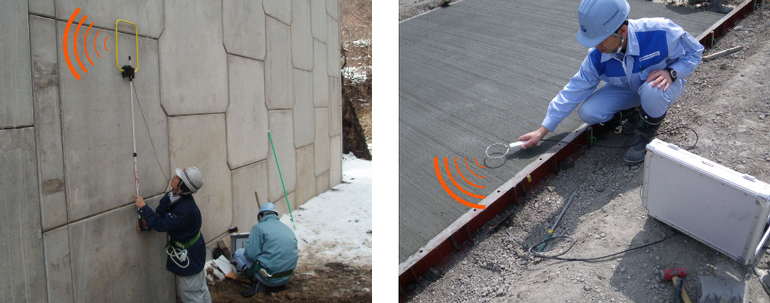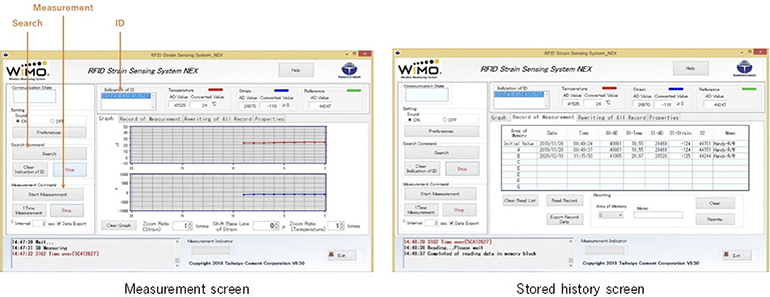 RFID diagnosis technology for concrete structures
RFID diagnosis technology for concrete structures
RFID Strain Measuring System
Overview
A system which measures strain in steel reinforced concrete structures
In the RFID strain sensing system, the data communication equipment (RFID tags) and sensors are embedded in the structure. Electromagnetic waves are provided to the RFID tags from the surface of the structure, driving the sensors to measure strain.
Measurement can be performed easily by anyone with a computer and a special reader/writer. The system also has no exposed cables, etc. on the surface of the concrete structure.

Features
● Strain measurement range of ±1000×10-6.
● RFID memory can store up to 6 measurements.
● No additional on-site processing is required, making sensor installation easy.
● Special measurement device for easy measurement.
Installation

Align the sensor along the length of the rebar (primarily main reinforcement), and fix it with cable ties.
Install the RFID tag at the intersection of multiple rebar, 5cm or less from the surface of the concrete.
Cast the concrete. When the mold is removed, there will be no exposed cable.
Measurement


Search for the RFID tag.
Press the search button on the reader/writer application, and move the antenna near where the embedded tag is located.
A notification sound will be played when the antenna passes over the tag, and the tag's unique number (ID) will be displayed.
All you have to do to perform measurement is press the measure button to acquire strain data from the sensor.
When past measurement history data, calibration factors, or other data are also stored on the tag, they will also be read in.
Data can be stored in internal memory.
This product is certified conformant with the Japanese Radio Act.
It must be certified with local radio laws before use outside of Japan.
